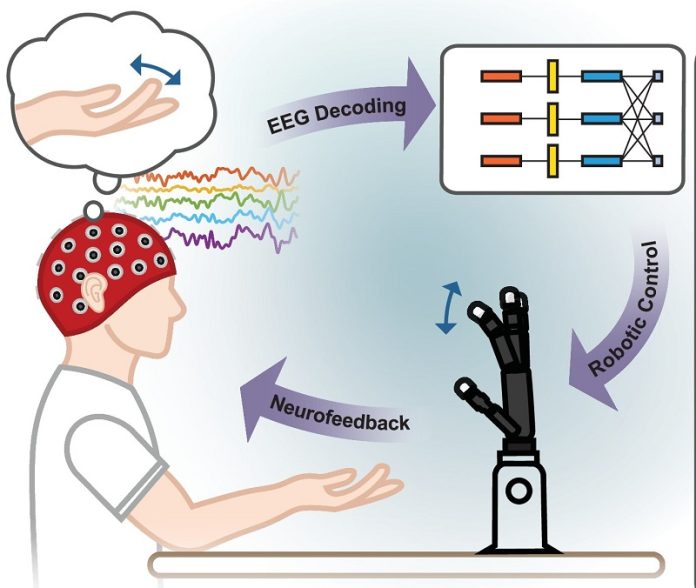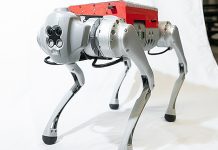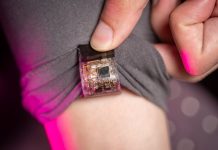
Imagine moving a robotic hand just by thinking. Scientists at Carnegie Mellon University have taken a big step toward making that a reality—without the need for risky brain surgery.
A new breakthrough in brain-computer interface (BCI) technology now allows people to control individual robotic fingers using only their thoughts, thanks to a method that reads brain signals from the outside of the head.
Brain-computer interfaces let the brain communicate directly with machines, bypassing muscles and nerves.
This could be life-changing for the more than one billion people worldwide living with disabilities.
While earlier high-precision BCI systems used electrodes implanted in the brain, these invasive procedures come with serious risks and are only suitable for a small number of people with extreme conditions.
That’s why Professor Bin He at Carnegie Mellon University has spent over 20 years working on safer, noninvasive alternatives.
His method uses a cap with sensors to pick up brainwaves through a technology called electroencephalography (EEG). Unlike implants, this system requires no surgery, making it much safer and more accessible.
Professor He and his team have already achieved several impressive firsts using EEG-based BCIs, including flying a drone and moving a robotic arm. Now, they’ve reached a new milestone: allowing users to control a robotic hand at the finger level.
Published in Nature Communications, their latest study shows that people wearing the EEG device could control individual robotic fingers in real time—just by thinking about moving them. This is the first time such precise finger control has been done using a noninvasive BCI. People were able to perform coordinated two- and three-finger movements using both actual motion and mental imagery alone.
To make this possible, the team developed a powerful deep-learning algorithm that interprets brain signals more accurately than ever before. Their system can continuously decode a person’s intention to move a finger, even without any physical movement.
Improving hand function—even slightly—can make a big difference in daily life, especially for those with disabilities. Tasks like grasping objects, typing, or buttoning a shirt depend on fine finger control. This research moves us closer to robotic tools that people can operate with their minds, restoring or enhancing these abilities.
Professor He believes this technology has the potential to help a wider group of people beyond those with severe conditions. It could one day be used for everything from rehabilitation to assistive devices for daily living.
This breakthrough shows how noninvasive BCI is evolving from basic tasks to more advanced and delicate control—paving the way for mind-powered devices in the real world.



